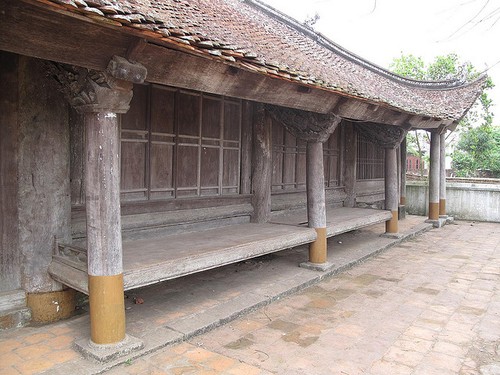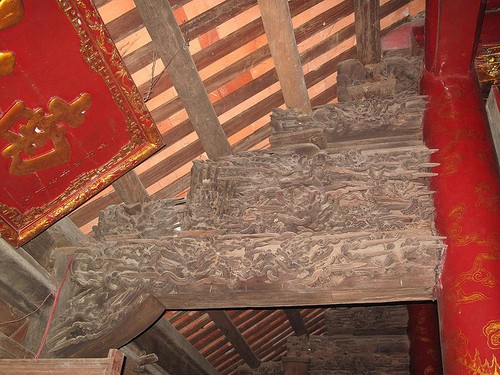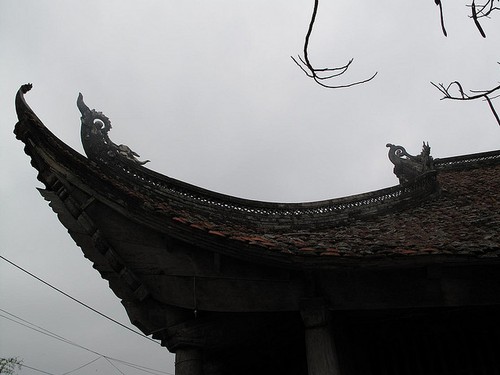(VOVworld) – Leaving Cape Sa Vi in Mong Cai, let’s join VOV reporter Lan Anh on a trip to Tra Co communal house in Tra Co ward in Mong Cai City, Quang Ninh province. Tra Co communal house is like a border marker affirming Vietnam’s cultural sovereignty.
Following Mr. Trung, an official of the Mong Cai Municipal People’s Committee, we begin our trip to Tra Co communal house. Tra Co is only 10 km from the town of Mong Cai in Quang Ninh. After a quarter of an hour on the bus, we reach our destination.

Photo: mytour.vn |
The communal house sits right at the center of the village. Along the path to the communal house, a picture of a peaceful village gradually appears featuring local fishermen patiently pulling fish out of a net. The communal house is being restored, so everything is messy. But that doesn’t matter. Nguyen Giao Te, President of the Elderly Association of Tra Co ward, says the communal house bears the historical record of the village, which the local people want to preserve. "During his visit, former Prime Minister Pham Van Dong said that the Tra Co communal house was like the guardian of our national sovereignty. So we need to preserve the communal house to protect our nation. Since reunification, it has been restored 4 times. We have always tried to preserve the original architecture and objects of the communal house”, said Mr. Te.
Despite being located on the border with China, Tra Co communal house has a purely Vietnamese architectural style. Mr. Te says: “Tra Co communal house is one of the oldest in the country dating back to the 16th century. All the features and worship ceremonies are totally Vietnamese. During the border war in 1979, all worship objects were removed to a safe place. In 1992, these objects were taken to Italy for a show”.

Photo: mytour.vn |
Bearing the architectural characteristics typical of a coastal village, Tra Co communal house contains intricate and subtle sculptures. Covering an area of 400m², the relic’s frame is of rare wood. On the sides of the roof, the curved corners are adorned with dragon heads. Decorative carvings are crowded with mythological animals- unicorns, turtles, dragons, and phoenixes and magical elements- flowers, and clouds. The relic is famous for the dragon carvings on its doors and its transverse panels in gold and red lacquer.

Photo: mytour.vn |
The communal house has 5 main compartments in the front and 3 more in the back. The roof of the house is similar to other communal houses in the Red River. The communal house is dedicated to the 6 Village Genies who founded Tra Co commune. Nguyen Van Huu, the guardian of the relic, says:
“It is said that 12 people from Hai Phong came here to set up the village, 6 of them went back to their home village. The others stayed and built this village”.
Over the years, the communal house has become a border marker of culture and history affirming Vietnam’s territorial sovereignty. Vu Dinh Dong, who lives in Tra Co ward, says: "This communal house reminds us that our ancestors founded and developed the village. It is a border marker showing Vietnam’s sovereignty. It is an undeniable historical witness to our sovereignty”.
The villagers of Tra Co hope that the restoration of this house will be completed soon. Tra Co communal house inspired songwriter Nguyen Cuong to write the song “The roof of the communal house in the coastal village”.
Lan Anh